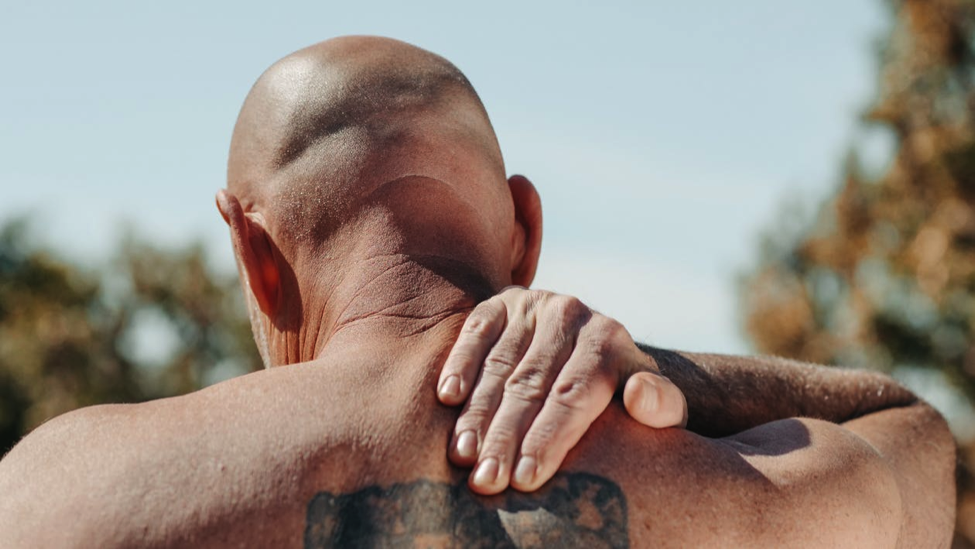
Your Health Magazine
4201 Northview Drive
Suite #102
Bowie, MD 20716
301-805-6805

More Weight Control, Nutrition & Exercise Articles
Strengthening Your Body Through Positive Change

Ever noticed how Minnesotans will embrace a fitness goal in the dead of winter while still balancing a plate of tater tot hotdish? Whether it’s ice fishing with a Fitbit or walking laps inside the Mall of America, there’s a quiet resilience in the way people across the state push for better health even when daylight feels like a rumor. But that strength doesn’t come from sudden transformation. It builds through steady, positive change. In this blog, we will share how strengthening your body doesn’t require perfection—just progress rooted in practical, repeatable steps that support your well-being long-term.
Real Change Starts With Removing What Drains You
Strengthening the body isn’t just about what you add—protein shakes, resistance bands, more sleep. It’s also about what you take out. The daily habits, substances, and routines that silently undercut progress. People tend to focus on doing more: more workouts, more steps, more supplements. But subtracting the things that actively hurt your health often has the bigger impact.
Among the most damaging? Nicotine in any form. Cigarettes, vaping, and chewing tobacco may seem like side habits, but they hijack the body’s energy systems and recovery processes. They reduce oxygen capacity, interfere with sleep cycles, increase inflammation, and shorten attention spans. Even casual use quietly sabotages efforts to feel stronger, sharper, or more energized.
The good news? There are now smarter, less judgmental ways to stop. Clinical hypnosis has emerged as a personalized, effective method for breaking nicotine dependence—not through shame or pressure, but through behavior retraining at the subconscious level. For Minnesotans ready to take that step, resources like https://www.quitsmokingminnesota.com/ provide the support needed to finally quit and reclaim control. Their approach is centered on tailored care, trust, and long-term change—not lectures or scare tactics.
Letting go of what weakens you is the first move toward real strength. It clears space for renewal and builds momentum for the habits that actually serve you.
Recovery Is Not a Luxury—It’s a System
In a culture that glorifies hustle, recovery often gets pushed to the sidelines. People will stack intense workouts, back-to-back meetings, and stress-eating like it’s a badge of honor. But the body doesn’t get stronger during exertion—it grows in the pause afterward. Recovery is where adaptation happens. Muscles rebuild. Hormones stabilize. The nervous system recalibrates.
You don’t need spa days and float tanks to recover well. You need rhythm. Consistent sleep, deep breathing, low-intensity movement, real food, and time without stimulation. Not every recovery strategy needs to be trendy. Sometimes it’s just standing outside for ten minutes or turning off the phone at night. The body notices.
Building Strength Means Focusing on Function, Not Image
Social media has warped the idea of fitness into a constant photo op. Abs, angles, algorithms. But strength is about what your body can do, not what it looks like. The ability to lift groceries without straining, to play with your kids without pain, to climb stairs without gasping—those markers matter more than any aesthetic.
Functional strength training centers movement, posture, balance, and injury prevention. It’s less about maxing out weights and more about building a body that supports your actual life. That might mean deadlifts, bodyweight squats, or resistance bands in the garage. It might mean yoga for mobility or farmer’s carries to stabilize your core. There’s no one right way, only the path that aligns with your needs.
As people live longer and work more flexibly, strength training becomes about durability. Not peak performance, but consistent capacity. The question becomes: how well can I move, adapt, and stay active across decades—not just seasons?
And that shift opens the door for people who were once excluded from mainstream fitness narratives. Older adults. People recovering from injury. Those managing chronic illness. Everyone deserves a body that feels capable and reliable. And building that body is a layered, evolving process—one grounded in patience, not pressure.
You’re Not Starting Over, You’re Starting From Experience
One of the biggest lies in wellness culture is the “fresh start.” As if every Monday is a reset. As if everything before was a failure. But the truth is, your body remembers everything. Every effort. Every walk. Every time you chose water over soda, stretched before bed, turned off the screen early. Nothing is wasted.
Positive change doesn’t require perfect streaks. It requires return. Again and again. You return to the gym. Return to the breath. Return to the choices that move you toward strength. Some days that return is messy or inconvenient. Some days it’s fluid. But it’s always valid.
And the longer you practice returning—without shame, without panic—the steadier you become. Strength becomes something you carry, not chase. And that’s the real reward.
Other Articles You May Find of Interest...
- Strengthening Your Body Through Positive Change
- “Pineapple for Fat Loss?” The Truth About Bromelain and Unnecessary Fat
- Best Doctor-Led GLP-1 Weight Loss Services in 2025
- How Much Caffeine is in Matcha Green Tea? Discover the Facts
- Exploring Salmon: How Many Calories and Protein Are Packed in 4 to 6 Ounces?
- Unlocking the Nutritional Benefits of Chicken Hearts for a Healthier Diet
- Maintaining Your Weight Loss After Ozempic: Tips for Success














